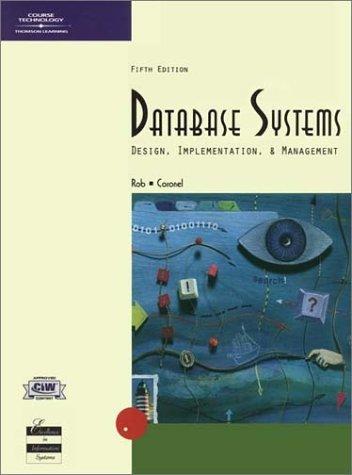Answered step by step
Verified Expert Solution
Question
1 Approved Answer
Case Study # 1 : RFID Propels the Angkasa Library Management System Radio - frequency identification ( RFID ) can play a key role in
Case Study #: RFID Propels the Angkasa Library Management System Radiofrequency identification RFID can play a key role in library management. The major advantage of using RFID is that it ensures traceability and security. In addition, RFID simplifies transactional processes at the library and can help to cut costs and save time. Across the globe, libraries are setting up the infrastructure for RFID as a replacement for manual management or barcodes. RFID tags can be embedded within a book, and unlike other forms of labeling, these tags can store additional information, like author and title. Using this system also speeds up the process of checking books in and out, prevents theft, and helps in inventory management. The Allianze University College of Medical Sciences AUCMS has successfully set up RFID tagging as part of its library management system. AUCMS is a premier institute offering courses in medicine and applied health sciences in Penang, Malaysia. The institution has a vast array of resources, including books, journals, newspapers, and ebooks, and the library caters to a large population of students and staff. AUCMS partnered with the Sains Group, which is a globally renowned software solutions and IT services provider, to install and implement the the companys Angkasa Library Management system. This system manages many of the core functions of the library, including acquisition, cataloguing, circulation, subscriptions to journals, and the management of an openaccess catalog available to members on the Web. The system is primarily useful as a repository of all library records. It enables the automatization of library processes that would earlier have been manual and paperbased. The Acquisition Module manages the process of acquiring the books, magazines, journals, and other materials for the library. This automates the entire process of acquisition, from the approval of orders to placing them, the recording of receipts and invoices to management of expenditure and maintenance of budgets. In a typical instance, lists of required reading material are sent over to the library heads, a final list is determined, and all of the important information is recorded on the system invoice numbers, supplier names, and so on The system provides a printable order form, which is then signed off on by the library head and sent to suppliers. Information on newly acquired books is entered into the system through the Cataloguing Module, which assigns classification numbers to each book. Data is entered in the standard machinereadable
Case Study #: RFID Propels the Angkasa Library Management System
Radiofrequency identification RFID can play a key role in library management. The major advantage of using RFID is that it ensures traceability and security. In addition, RFID simplifies transactional processes at the library and can help to cut costs and save time. Across the globe, libraries are setting up the infrastructure for RFID as a replacement for manual management or barcodes. RFID tags can be embedded within a book, and unlike other forms of labeling, these tags can store additional information, like author and title. Using this system also speeds up the process of checking books in and out, prevents theft, and helps in inventory management. The Allianze University College of Medical Sciences AUCMS has successfully set up RFID tagging as part of its library management system. AUCMS is a premier institute offering courses in medicine and applied health sciences in Penang, Malaysia. The institution has a vast array of resources, including books, journals, newspapers, and ebooks, and the library caters to a large population of students and staff. AUCMS partnered with the Sains Group, which is a globally renowned software solutions and IT services provider, to install and implement the the companys Angkasa Library Management system. This system manages many of the core functions of the library, including acquisition, cataloguing, circulation, subscriptions to journals, and the management of an openaccess catalog available to members on the Web. The system is primarily useful as a repository of all library records. It enables the automatization of library processes that would earlier have been manual and paperbased. The Acquisition Module manages the process of acquiring the books, magazines, journals, and other materials for the library. This automates the entire process of acquisition, from the approval of orders to placing them, the recording of receipts and invoices to management of expenditure and maintenance of budgets. In a typical instance, lists of required reading material are sent over to the library heads, a final list is determined, and all of the important information is recorded on the system invoice numbers, supplier names, and so on The system provides a printable order form, which is then signed off on by the library head and sent to suppliers. Information on newly acquired books is entered into the system through the Cataloguing Module, which assigns classification numbers to each book. Data is entered in the standard machinereadable
Step by Step Solution
There are 3 Steps involved in it
Step: 1

Get Instant Access to Expert-Tailored Solutions
See step-by-step solutions with expert insights and AI powered tools for academic success
Step: 2

Step: 3

Ace Your Homework with AI
Get the answers you need in no time with our AI-driven, step-by-step assistance
Get Started


